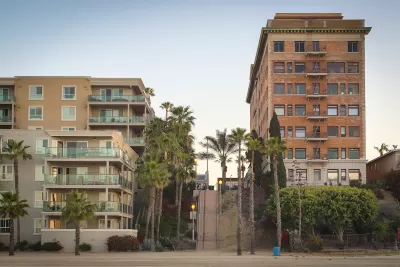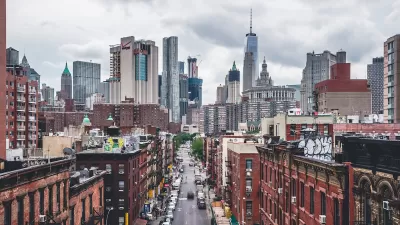Changing zoning rules for a small number of parcels can increase land values and housing costs without boosting the housing supply.

In a piece for Governing, Emily Hamilton explains why concerns that upzoning, or liberalizing land use regulations to accommodate more housing construction could actually raise the cost of land and housing are largely overblown.
These fears, Hamilton explains, come from the idea that upzoning lower-density parcels, particularly if limited to certain areas, will raise land values. However, “Abundant and diverse new housing construction pushes rents down. And because land’s value is ultimately determined by the stream of income it can produce, as more housing supply reduces rents across a region, it puts downward pressure on land values, too.”
Hamilton analyzed land values in Houston, where zoning reforms reduced minimum lot sizes over a span of decades. “Together, Houston’s 1998 and 2013 upzonings facilitated the construction of about 80,000 houses on lots less than 5,000 square feet. Small-lot development has allowed for less expensive housing than could otherwise be built and created opportunities for more people to live in desirable neighborhoods close to job centers.” Meanwhile, a Chicago study showed that limited upzoning near transit stations raised property values of some lots without yielding new housing.
Hamilton’s analysis shows that upzoning has the biggest positive impact when applies broadly over larger geographic areas. “The Houston case shows that when land-use liberalization leads to widespread and diverse housing construction, more people can live where they need to without an unnecessary spike in the price of existing houses.”
FULL STORY: How U.S. Cities Can ‘Upzone’ Without Compromising Affordability

Study: Maui’s Plan to Convert Vacation Rentals to Long-Term Housing Could Cause Nearly $1 Billion Economic Loss
The plan would reduce visitor accommodation by 25,% resulting in 1,900 jobs lost.

North Texas Transit Leaders Tout Benefits of TOD for Growing Region
At a summit focused on transit-oriented development, policymakers discussed how North Texas’ expanded light rail system can serve as a tool for economic growth.

Why Should We Subsidize Public Transportation?
Many public transit agencies face financial stress due to rising costs, declining fare revenue, and declining subsidies. Transit advocates must provide a strong business case for increasing public transit funding.

A Visual Celebration of Manhattan’s Chinatown Elder Community, Through Food
Lanterns, cafeteria trays, and community connection take center stage in this stunning photo essay.

How to Make US Trains Faster
Changes to boarding platforms and a switch to electric trains could improve U.S. passenger rail service without the added cost of high-speed rail.

Columbia’s Revitalized ‘Loop’ Is a Hub for Local Entrepreneurs
A focus on small businesses is helping a commercial corridor in Columbia, Missouri thrive.
Urban Design for Planners 1: Software Tools
This six-course series explores essential urban design concepts using open source software and equips planners with the tools they need to participate fully in the urban design process.
Planning for Universal Design
Learn the tools for implementing Universal Design in planning regulations.
City of Santa Clarita
Ascent Environmental
Institute for Housing and Urban Development Studies (IHS)
City of Grandview
Harvard GSD Executive Education
Toledo-Lucas County Plan Commissions
Salt Lake City
NYU Wagner Graduate School of Public Service





























